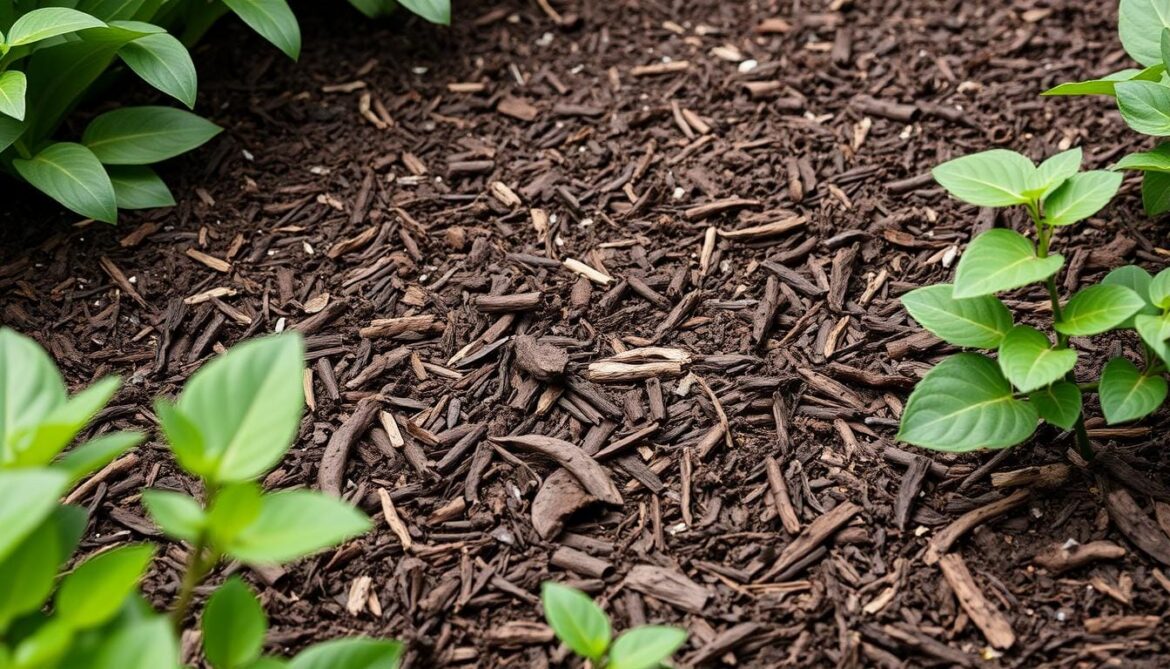As the seasons change, your garden or yard requires attention to maintain its health and beauty. One crucial task is refreshing the mulch to ensure it continues to retain moisture and suppress weeds.
Over time, mulch breaks down due to exposure to sun, rain, and snow, losing its effectiveness. Replenishing it is essential for maintaining a healthy landscape and soil condition. Proper mulch application helps regulate soil moisture, reducing the need for frequent watering.
Key Takeaways
- Regular mulch replacement is crucial for garden health.
- Mulch breaks down over time due to environmental factors.
- Fresh mulch helps retain soil moisture and suppress weeds.
- Proper mulch application is key to a healthy landscape.
- Replenishing mulch maintains soil condition and overall garden beauty.
Signs It’s Time to Replace Your Mulch
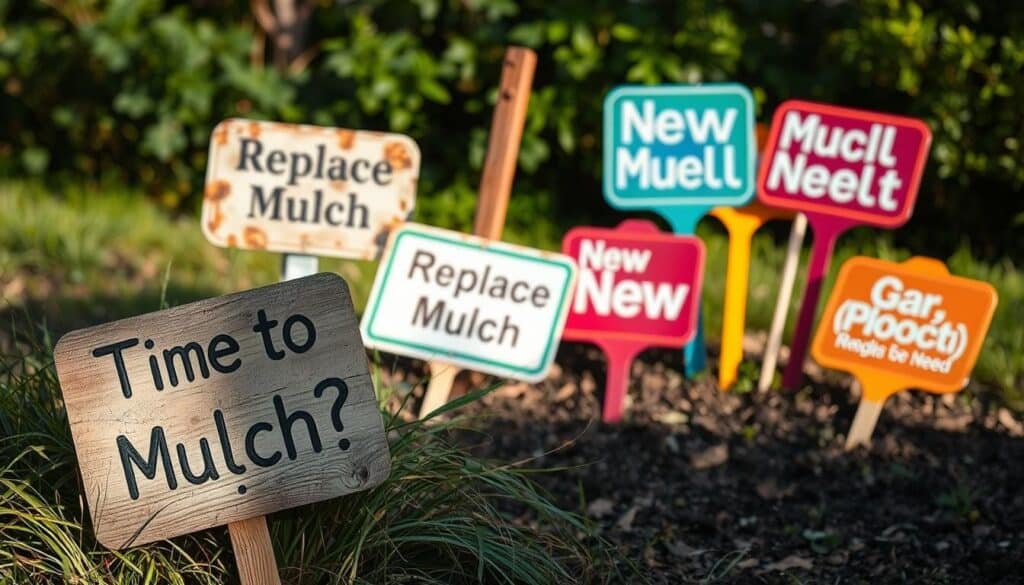
Understanding when to replace mulch is crucial for maintaining a healthy and visually appealing garden. Mulch plays a significant role in supporting plant growth, but its effectiveness diminishes over time.
Visual Indicators Your Mulch Needs Refreshing
One of the primary signs that your mulch needs replacing is its appearance. If the mulch looks worn out, is discolored, or has become thin and patchy, it’s likely time for a refresh. Additionally, if you notice weeds growing through the mulch or the mulch has started to decompose and mix with the soil, it’s a clear indication that new mulch is needed.
Seasonal Timing for Mulch Replacement
The timing of mulch replacement can depend on various factors, including the type of mulch and local climate conditions. Generally, spring is considered an ideal time for mulch replacement, as it provides the best protection for new growth and helps with moisture retention. For areas with harsh winters, applying mulch in the fall can provide necessary insulation for perennial plants. A table summarizing the optimal mulch replacement timing based on seasons is provided below.
| Season | Optimal Mulch Timing | Benefits |
|---|---|---|
| Spring | After spring planting | Protects new growth, retains moisture |
| Fall | Before winter | Insulates perennial plants, prepares soil for next growing season |
For more detailed guidance on garden maintenance and how to care for specific plants, you can visit Chikus Garden’s guide on replanting strawberries, which provides valuable insights into garden care practices.
Why Replacing Mulch Is Important
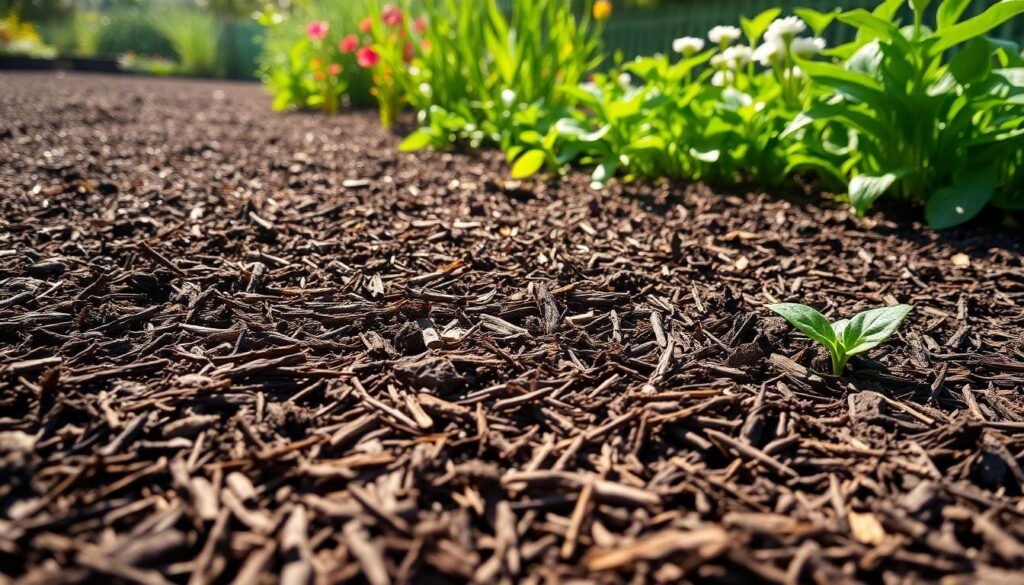
Understanding the importance of replacing mulch can significantly enhance the growth and vitality of your plants. Mulch plays a crucial role in gardening, affecting not just the aesthetic appeal of your garden but also the health of your soil and plants.
Replacing old mulch is essential for maintaining optimal garden conditions. Fresh mulch helps in retaining soil moisture, suppressing weeds, and regulating soil temperature, all of which are critical for healthy plant development.
Benefits of Fresh Mulch for Your Garden
Fresh mulch offers numerous benefits, including improved soil health and plant growth. It helps in maintaining moisture levels in the soil, reducing the need for frequent watering. Additionally, fresh mulch acts as a barrier, preventing weeds from germinating and competing with your plants for nutrients.
Problems Caused by Old, Decomposed Mulch
On the other hand, old, decomposed mulch can cause several problems. It can form a water-repellent layer that prevents moisture from reaching plant roots. Decomposed mulch also becomes a breeding ground for harmful fungi and diseases that can spread to plants. Furthermore, it loses its ability to suppress weeds, allowing them to grow in your garden beds. Old mulch can also become a habitat for pests like termites and earwigs, potentially damaging your plants.
By removing old mulch and replacing it with fresh material, you can prevent these issues and ensure your garden remains healthy and vibrant. Regular mulch replacement is a simple yet effective gardening practice that supports plant growth and maintains the overall health of your garden.
Removing Old Mulch Properly
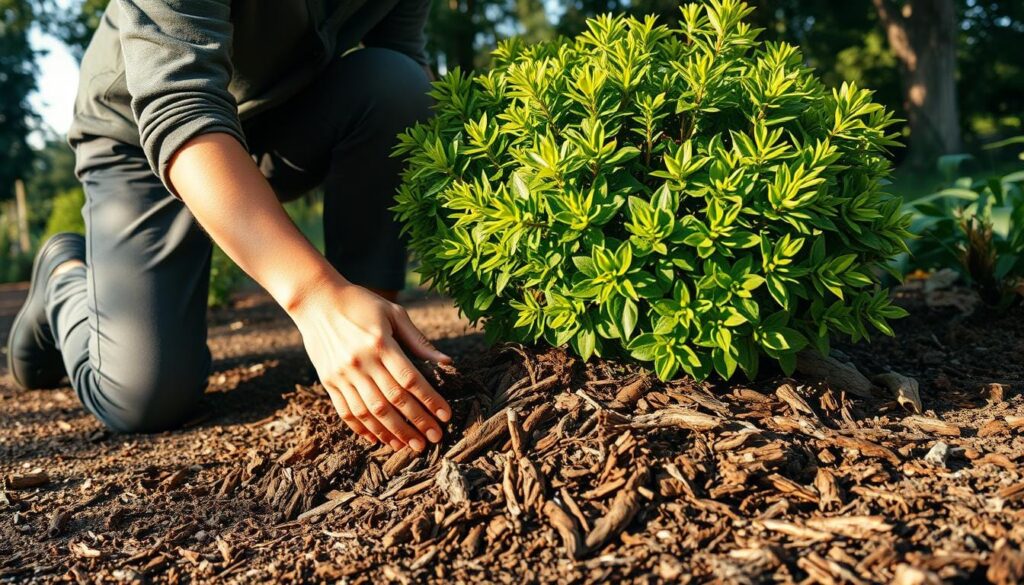
Removing old mulch is a crucial step in maintaining a healthy and visually appealing garden. Over time, mulch breaks down and can become less effective at retaining moisture and suppressing weeds.
Tools You’ll Need for the Job
To remove old mulch, you’ll need a few basic tools: a garden fork for gently turning over the mulch, a rake for collecting the old material, and a wheelbarrow or compost bin for disposing of it.
Step-by-Step Removal Process
Start by raking the old mulch into a pile. Use a garden fork to loosen it, making it easier to remove. Then, transfer the old mulch to a compost bin or wheelbarrow.
What to Do with Old Mulch
Old mulch can be repurposed by adding it to a compost pile, where it will break down into nutrient-rich soil. Alternatively, it can be reused in less visible areas of the yard or mixed with new mulch.
| Disposal Method | Description |
|---|---|
| Composting | Break down old mulch into nutrient-rich soil. |
| Reusing | Use old mulch in less visible areas or mix with new mulch. |
| Disposal | Dispose of old mulch through municipal yard waste collection. |
Applying New Mulch Effectively
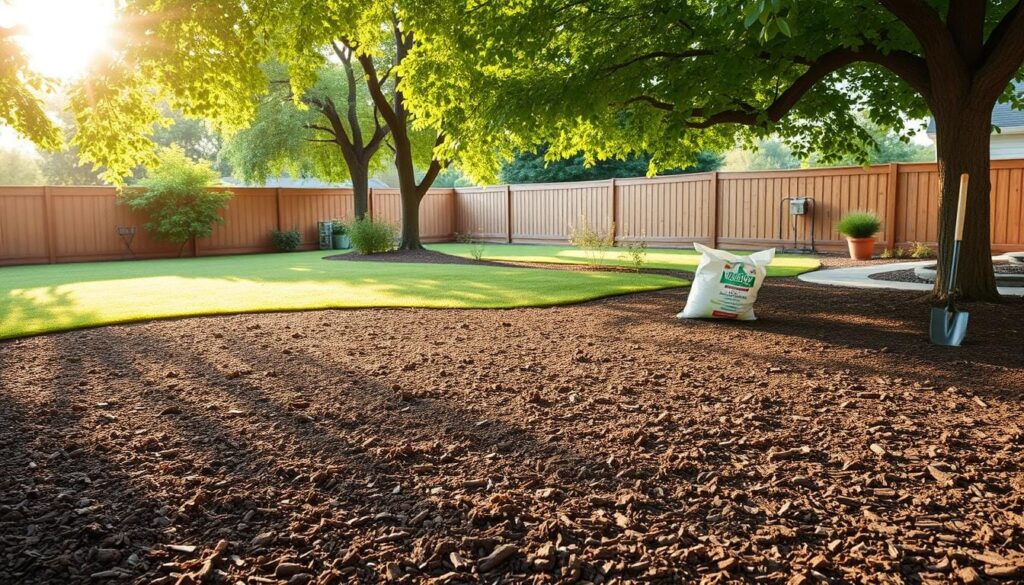
Effective application of new mulch is key to enhancing the beauty and health of your plants, trees, and overall garden landscape. To achieve the best results, it’s crucial to apply mulch correctly.
Calculating How Much Mulch You Need
To determine the amount of mulch required, calculate the square footage of the area to be mulched. A general rule of thumb is to apply a 2- to 4-inch layer of mulch. For a 100 square foot area, you’ll need 2-4 cubic feet of mulch for a 2- to 4-inch depth, respectively.
| Area (sq ft) | 2-inch Depth (cubic ft) | 4-inch Depth (cubic ft) |
|---|---|---|
| 100 | 2 | 4 |
| 200 | 4 | 8 |
| 500 | 10 | 20 |
Proper Mulch Depth Guidelines
Maintain a mulch depth of 2 to 4 inches. Using a rake or gloved hands, smooth out the mulch to the desired depth, ensuring not to suffocate plants or trees by keeping the mulch at least one inch away from their trunks.
Application Techniques for Different Garden Areas
Different garden areas require specific mulching techniques. For perennial beds and vegetable gardens, apply mulch around plants, avoiding their crowns. For tree rings, keep the mulch a few inches away from the trunk. In landscape borders, create clean edges to contain the mulch.
Choosing the Right Mulch for Your Landscape
The right mulch can elevate your garden’s aesthetic and functionality, making the choice crucial. When deciding on the best mulch for your garden, several factors come into play, including the type of plants you have, the climate, and your personal preferences regarding appearance and maintenance.
Organic vs. Inorganic Mulch Options
Organic mulches, such as wood chips and bark, are popular for their natural look and ability to improve soil health as they decompose. In contrast, inorganic mulches, including rubber and stone, offer durability and low maintenance, albeit without the soil-enhancing benefits. The choice between organic and inorganic mulch depends on your garden’s specific needs and your long-term landscaping goals.
Color and Aesthetic Considerations
Mulch color can significantly impact your garden’s visual appeal. Options like black mulch, red mulch, and brown mulch are available, with non-toxic dyes used to achieve the desired color. The color you choose can complement your home’s exterior and hardscape elements, creating a cohesive landscape design. Additionally, consider how different mulch colors might affect soil temperature and plant growth, as well as how they will look with seasonal changes.
Conclusion: Maintaining Your Mulch for Lasting Results
To keep your garden thriving, understanding when and how to replace mulch is essential. Regular mulch maintenance is vital for landscape health and aesthetics. Inspect your mulch seasonally and refresh or replace it as needed. Proper care practices, such as gentle raking, can extend the life of new mulch. Be prepared to troubleshoot common issues like fungal growth or erosion. By adopting a regular mulch replacement routine, you’ll enhance your garden’s appearance and reduce long-term maintenance. Consider consulting local garden centers for region-specific advice to keep your landscape vibrant throughout the year.
